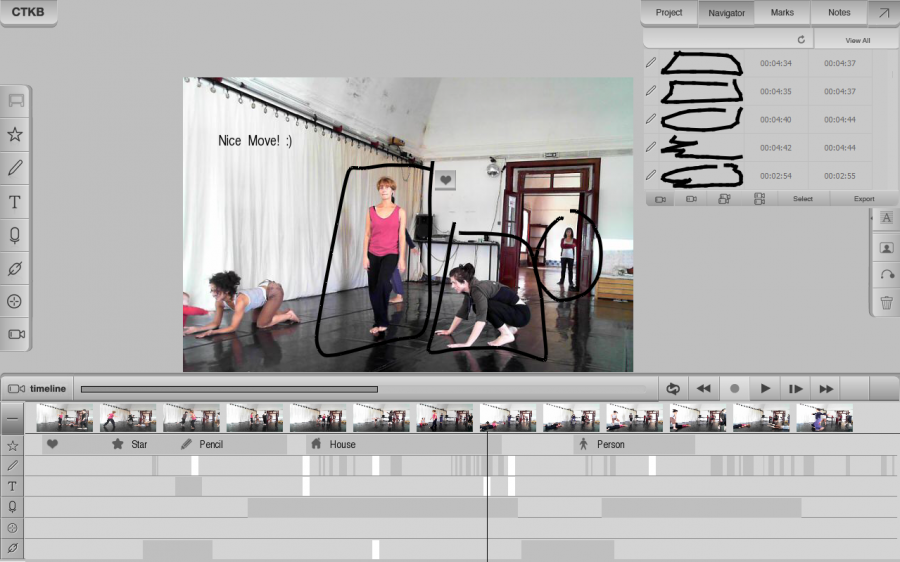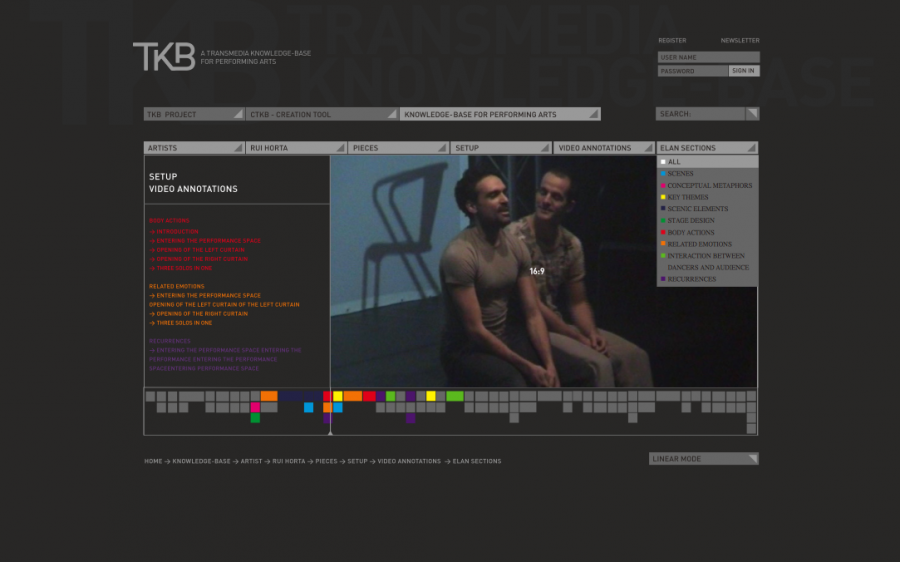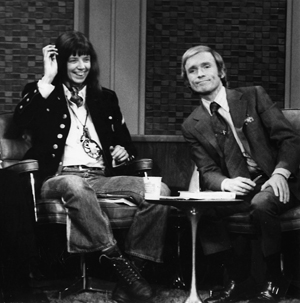Extended deadline:
February 28th 2013!

1st. CALL for PAPERS
In the framework of the TKB project conclusion (http://tkb.fcsh.unl.pt), a 1st. CALL for Papers is now open for submission of abstracts to the following international conference on:
"Multimodal Communication: Language, Performance and Digital Media"
Event dates: Thursday 02 to Friday 03 May 2013
Venue: CCB, Lisbon (http://www.ccb.pt/sites/ccb/en-EN/).
The CCB are co-producers of the conference and associate partners of the TKB project, running at the Centre of Linguistics (CLUNL) of FCSH-UNL.
The Conference is organized in the framework of the TKB research project conclusion (http://tkb.fcsh.unl.pt) and aims to: present the results and software tools developed during the TKB project; provide a multidisciplinary forum for researchers from different disciplines and artists interested in the documentation of Performing Arts (with a focus on contemporary theatrical dance and Performance), as well as in issues of multimodality in human communication and in human-computer interaction, particularly regarding video annotation tools and collaborative platforms for cultural heritage. It is organized by the FCSH and the FCT of Universidade Nova de Lisboa, Portugal.
The event wishes to bring together contemporary artists and researchers from a broad range of academic disciplines, working within different theoretical and methodological paradigms in a creative, internationally oriented, and stimulating atmosphere. The importance of multimodal communication and creativity is now generally recognised by researchers from either the Humanities, Information Technologies or Cognitive Science. This conference therefore offers an opportunity to present and learn about research findings concerning human behaviour and agency in different types of communication and their cognitive, cultural, narrative, technological, social, textual or discourse functions.
Conference Topics (but not limited to):
Documentation of Performing Arts
Performance Studies
Multimodal Corporal
Digital Media applied to Performance
Cultural Heritage
Performance Philosophy
Cognitive approaches to theatrical performance
Multimodal Metaphor
Applications of Conceptual Metaphor Theory to Performing Arts
Applied Linguistics
Speech and gestures in human communication
Verbal vs. non-verbal interactions
Intercultural aspects of multimodal behaviour
Human-computer interaction
Video annotation
Annotation schemes and tools for multimodal corporal
Motion Tracking
New approaches to Digital Games

Keynote speakers:
Sally Jane Norman (Attenborough Centre for Creative Arts, Sussex: UK)
Charles Forceville (Universiteit van Amsterdam, NL)
Irene Mittelberg (University Aachen, DE)
Scott DeLahunta (Forsythe Foundation: Motion Bank, DE)
Scientific Programme Committee:
Carla Fernandes (FCSH-UNL: CLUNL)
Nuno Correia (FCT/UNL: Dept. Computer Science)
João Sáágua (Director FCSH-UNL)
Teresa Romão (FCT/UNL: Dept. Computer Science)
Isabel Rodrigues (Faculdade Letras da Universidade do Porto: CEAUP)
Sally Jane Norman (Attenborough Centre for Creative Arts, Sussex: UK)
Rui Horta (Director O Espaço do Tempo Transdisciplinary Centre)
Dalila Rodrigues (CCB Lisbon)
Sarah Whatley (Coventry University and Siobhan Davies Dance, UK)
Scott DeLahunta (Motion Bank project: Forsythe Foundation, DE)
Stephan Jürgens (IPL: Escola Superior de Teatro e Cinema, PT)
Bertha Bermudez (ICK Amsterdam - Emio Greco|PC, NL)
Irene Mittelberg (University Aachen, DE)
Charles Forceville (Universiteit van Amsterdam, NL)
Rute Costa (FSCH-UNL: CLUNL)
Teresa Lino (FSCH-UNL: CLUNL)
Antónia Coutinho (FSCH-UNL: CLUNL)
Isabella Paoletti (FCSH-UNL: CLUNL)
Gil Mendo (Culturgest, PT)
Maria José Fazenda (Escola Superior de Dança, PT)
Samuel Rego (Director-Geral das Artes, PT)
Organization: FCSH/CUNL (www.fcsh.unl.pt) and FCT-UNL (www.fct.unl.pt)
TKB Project Supporters:
Fundação para a Ciência e a Tecnologia
O Espaço do Tempo (Transdisciplinary Arts Centre)
Centro Cultural de Belém
Fundação Calouste Gulbenkian
Atelier Re.Al
Deadline for abstract submission (400 to 700 words limit):
Extended deadline:
February 28th 2013!
The abstracts should be sent by e-mail attachment to carla.fernandes@fcsh.unl.pt
Abstracts should be included as Word or PDF file attachments, and be anonymised for blind review. Please indicate clearly in your email the name(s) of the presenter(s), university affiliation(s) and email address(es).
Selected papers will appear, after extension and peer-review, in a special issue of international journal (currently under negotiation).
Notification of acceptance will be communicated by 15 March, 2013.
Conference fee:
General public: 70 €
Students: 35 €
The fees include coffee/tea and other refreshments, as well as the conference abstracts.
The Payment procedure will be published soon in the conference webpage to appear at the TKB project's site.


